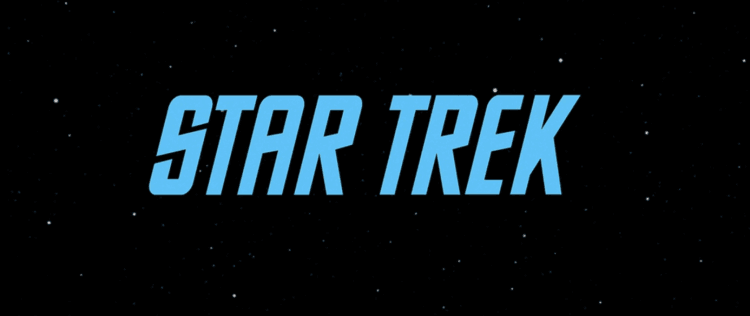
New year, new column! Same old writer, though. For the first ‘Final Frontier Friday’ of 2020, we’re kicking off the new year with a look back to the original series episode ‘Tomorrow is Yesterday’
Penned by the late, great D.C. Fontana, ‘Tomorrow is Yesterday’ started life as the second half of a planned two-parter. That’s right, the original ‘Star Trek’ very nearly had a two-part episode that wasn’t stuffed with an hour’s worth of (cleverly) recycled footage! As initially conceived, the episode would have picked up where ‘The Naked Time’ left off. As you may recall, that installment ended with the Enterprise being thrown three days back in time. Presumably a two-part version of the story would have cast them a bit farther back, (After all, where’s the drama in staying out of your own way for a long weekend?) but we may never know.
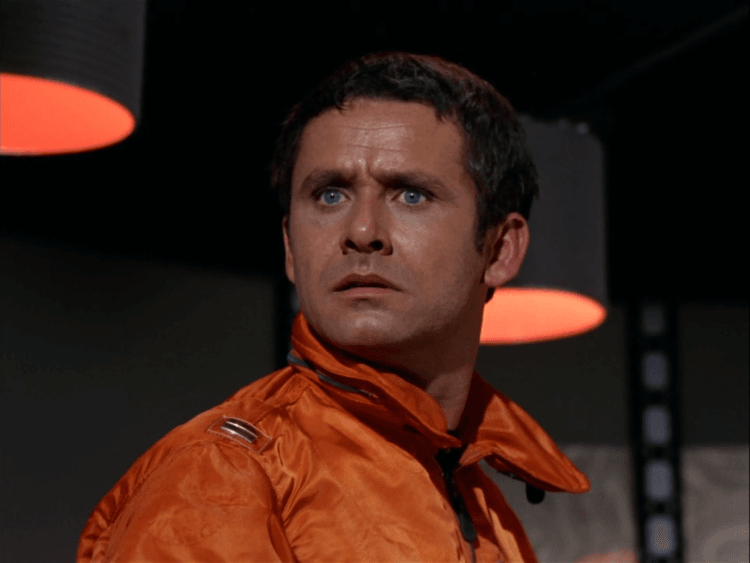 So what happened? Why did the planned two-parter become a pair of standalone episodes? Well, it’s actually surprisingly difficult to find a definitive recounting of the events leading to the abandonment of ‘Naked Time 2’, though the closest is probably the version contained in the first volume of Marc Cushman’s superlative original series reference work, ‘These Are The Voyages’. According to Fontana, while the story was conceived of as a two-parter, with part two taking advantage of the time travel element, the planned second part was never much more than a germ of an idea. Fontana then used this germ as a springboard, finding inspiration of the Enterprise being transported to present-day Earth, where it would be seen as a UFO.
So what happened? Why did the planned two-parter become a pair of standalone episodes? Well, it’s actually surprisingly difficult to find a definitive recounting of the events leading to the abandonment of ‘Naked Time 2’, though the closest is probably the version contained in the first volume of Marc Cushman’s superlative original series reference work, ‘These Are The Voyages’. According to Fontana, while the story was conceived of as a two-parter, with part two taking advantage of the time travel element, the planned second part was never much more than a germ of an idea. Fontana then used this germ as a springboard, finding inspiration of the Enterprise being transported to present-day Earth, where it would be seen as a UFO.
The episode’s origin was actually somewhat more complicated, as a similar idea had been among a number of concepts submitted by producer Bob Justman and others as jumping off points for the show’s writers. In fact, Justman tried to get story credit on ‘Tomorrow is Yesterday’, though his request was ultimately denied. For her part, Fontana insisted that she never saw Justman’s submission. While it would be easy to read this as Justman being denied his due credit (it certainly wouldn’t be the only time someone affiliated with ‘Star Trek’ tried to claim any credit that wasn’t nailed down), it’s just as likely that Fontana was telling the truth and that she and Justman were simply two creative people contributing to the same show who were thinking along similar lines. Frankly, neither of those situations is particularly rare in the television industry.
Now on the show…
On Earth in 1969, and American Air Force base spots something strange on its radar. Whatever the object is, it seemingly appeared out of nowhere. A fighter jet is launched to investigate the UFO, which is revealed to be the Enterprise.
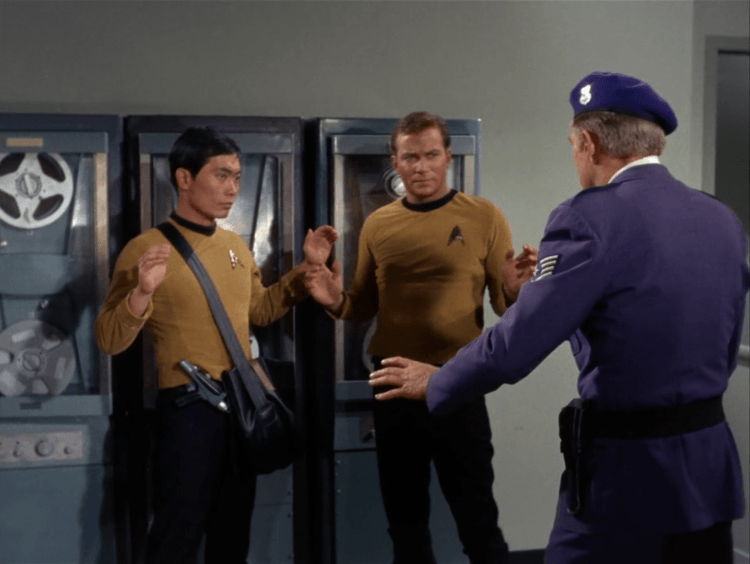 On the bridge of the Enterprise, the crew is reacting to an unusual accident. After passing too close to a black star at warp speed, the ship was thrown out of control and sent careening through the cosmos at unbelievable speed. As they assess their situation, Uhura reports that she’s not picking up anything on the usual Starfleet channels but something is coming through on another frequency. That something turns out to be a radio broadcast dealing with humanity’s first moon shot, which is planned for that Wednesday. Kirk remembers the first manned moon shot dating to the 1960s, which in turn leads Spock to conclude that their encounter with the black star has sent them three hundred years into the past.
On the bridge of the Enterprise, the crew is reacting to an unusual accident. After passing too close to a black star at warp speed, the ship was thrown out of control and sent careening through the cosmos at unbelievable speed. As they assess their situation, Uhura reports that she’s not picking up anything on the usual Starfleet channels but something is coming through on another frequency. That something turns out to be a radio broadcast dealing with humanity’s first moon shot, which is planned for that Wednesday. Kirk remembers the first manned moon shot dating to the 1960s, which in turn leads Spock to conclude that their encounter with the black star has sent them three hundred years into the past.
Just then, Uhura picks up and plays another signal, this time concerning the fighter that was launched in the teaser. Kirk orders Sulu to gain altitude as fast as he can, but it’s not fast enough to shake the fighter. As he follows the Enterprise’s ascent, the pilot marvels at the ship’s size and begins describing it to his superiors. With the reality of the UFO confirmed, the base commander orders it shot down. Spock points out that the plane may be carrying nuclear weapons, which would pose a threat to the ship in its current state. Kirk orders a tractor beam on the plane. When the beam begins to tear the plane apart, Kirk further has the pilot beamed onboard. In the transporter room, Kirk assures the pilot – Captain John Christopher – that he is among friends. Kirk leads Christopher from the bridge, explaining that he’s from the future and giving him the Cliff’s Notes to the Enterprise.
On the bridge, Spock is concerned by Christopher’s presence, pointing out to Kirk that he could irrevocably alter history if he is allowed to return to Earth. Kirk reluctantly agrees and asks that Christopher be provided some more comfortable clothes and brought to the ready room. Later, in the ready room, Kirk explains to Christopher – now wearing a Starfleet lieutenant’s uniform – that for the sake of history he can’t be allowed to return home. Christopher is less than pleased, and Spock’s “assurance” that he made no significant mark on history is less than helpful considering the wife and children he would leave behind. Kirk remains firm yet apologetic, and Christopher finds some cold comfort in the knowledge that the Enterprise is currently stuck in his time – meaning that Kirk can’t go home either.
 Later, Spock contacts Kirk to inform him that he has found new information on Christopher. Kirk calls Spock and Christopher to his quarters, but quickly realizes that Christopher is not where he’s supposed to be. Surmising correctly that Christopher is trying to escape, Kirk intercepts him in the transporter room, retrieving his stolen phaser and knocking him out. Spock arrives in sickbay soon after he comes to and informs Kirk, Christopher, and McCoy that while Christopher did not make much of a mark on history, his (as yet unborn) son Shaun Christopher did, leading the first Earth-Saturn mission.
Later, Spock contacts Kirk to inform him that he has found new information on Christopher. Kirk calls Spock and Christopher to his quarters, but quickly realizes that Christopher is not where he’s supposed to be. Surmising correctly that Christopher is trying to escape, Kirk intercepts him in the transporter room, retrieving his stolen phaser and knocking him out. Spock arrives in sickbay soon after he comes to and informs Kirk, Christopher, and McCoy that while Christopher did not make much of a mark on history, his (as yet unborn) son Shaun Christopher did, leading the first Earth-Saturn mission.
Kirk acknowledges that they have to find a way to return Christopher to Earth, but it’s easier said than done. His plane, after all, crashed in an open field, meaning search parties are well aware that he wasn’t on board. On top of that, Christopher informs them that his radio transmissions were recorded and the plane’s wing camera captured footage of the Enterprise. Spock further notes that the fact that Christopher’s plane was destroyed by the ship’s tractor beam makes it unlikely that they will be taken as anything other than a genuine UFO. On a brighter note though, Spock does have a theory about how they can return to the twenty-third century. Kirk also has a plan, namely that they destroy the physical evidence Christopher collected so that regardless of what he does or doesn’t report to his superiors, he will just be one more guy who saw a UFO.
Christopher agrees and sketches a layout of the base for them. After some preparation, Kirk and Sulu beam down to the base and quickly find the room they’re looking for. Though they find the tapes, they are cornered by a staff sergeant with base security before they can beam up. Agreeing with an anxious McCoy that the landing party has been too long without contact, Spock signals their communicators. Unfortunately, the staff sergeant – who has already confiscated the team’s equipment – opens one and is beamed aboard by mistake.
After instructing his crew to keep their unexpected guest in the transporter room, Kirk reacquires the tapes and goes about retrieving the photographic evidence. He and Sulu find freshly developed footage of the Enterprise in a darkroom, but set off a silent alarm in the process. Security personnel arrive and apprehend Kirk, but Sulu manages to slip away in the confusion and beam back to the ship with the tapes and film in tow.
Scotty finishes repairing the ship’s engines and begins preparations for their trip back to the future. As he does so, Kirk is interrogated at the base by Lieutenant Colonel Fellini who threatens to have him locked up for two hundred years (which Kirk quips would be just about right). Meanwhile, Spock and the others plan a rescue mission, which Christopher insists on joining. Spock, Sulu, and Christopher beam down, though Spock ensures that only he and Sulu are issued phasers. The rescue succeeds, but while the Starfleet team is distracted, Christopher grabs one of the guard’s guns and holds it on Kirk as he refuses to return to the Enterprise.
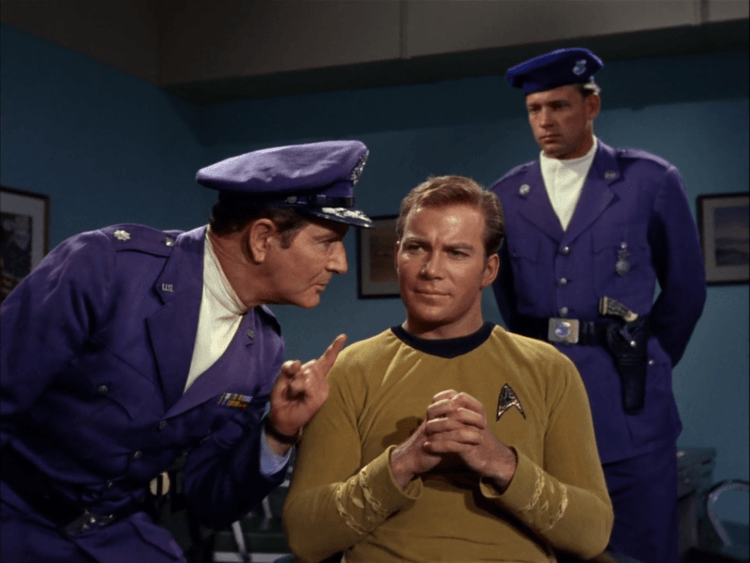 The situation is resolved when Spock manages to deliver a nerve pinch to Christopher, and the four are beamed back to the Enterprise. Once aboard, Spock explains that their best chance at returning home is to slingshot around the sun at high warp, essentially replicating the accident that brought them here in the first place. Now conscious, Christopher asks what they’ll be doing about himself and the staff sergeant, and Spock explains that during the slingshot maneuver, they will momentarily pass through their relative past. When that happens, Christopher and the guard will be transported back to points before they were beamed aboard. They’ll have nothing to remember because nothing will have technically happened.
The situation is resolved when Spock manages to deliver a nerve pinch to Christopher, and the four are beamed back to the Enterprise. Once aboard, Spock explains that their best chance at returning home is to slingshot around the sun at high warp, essentially replicating the accident that brought them here in the first place. Now conscious, Christopher asks what they’ll be doing about himself and the staff sergeant, and Spock explains that during the slingshot maneuver, they will momentarily pass through their relative past. When that happens, Christopher and the guard will be transported back to points before they were beamed aboard. They’ll have nothing to remember because nothing will have technically happened.
Christopher changes into his flight gear and arrives in the transporter room as the slingshot begins. He thanks Kirk, and is returned to his plane. Since this time the Enterprise is nowhere to be seen, he reports to base that the UFO was a false alarm. Likewise, the guard is beamed back to the base where he finds nothing amiss – as Kirk and Sulu never had to break in. With their passengers gone, the ship proceeds through the time warp and despite a close call with the engines, survives the trip. After a moment of tension, they are hailed by Starfleet control, confirming that they have, in fact, returned home.
‘Tomorrow is Yesterday’ is an interesting example of ‘Star Trek’ in that it’s not one that tends to turn up on a lot of “best ever” lists, nor is it one I’m in the habit of calling a personal favorite. What it is, though, is an example of a rock-solid installment of ‘Star Trek’, though I would expect nothing less from D.C. Fontana. It’s also fifty minutes of all-caps FUN, which – even if the episode falls short of greatness – is at the end of the day all I can really ask of any ‘Star Trek’.
One thing the episode does is present an unusual twist on time travel stories in the person of Captain Christopher. In most stories of this sort, Christopher himself would be the important historical figure as time travel stories – especially in ‘Star Trek’ – tend to see the crew finding themselves in the midst of some significant events. Think of Sisko taking the place of Gabriel Bell in ‘Past Tense’ or the Zephram Cochrane side of ‘Star Trek: First Contact‘. Here, though, Christopher’s historical contribution, such as it is, isn’t anything he’s actually done (nor something he will do). Rather, the thing of importance is the son who hasn’t even been born yet. It’s nice to see a time travel story that’s just a bit different from the norm.
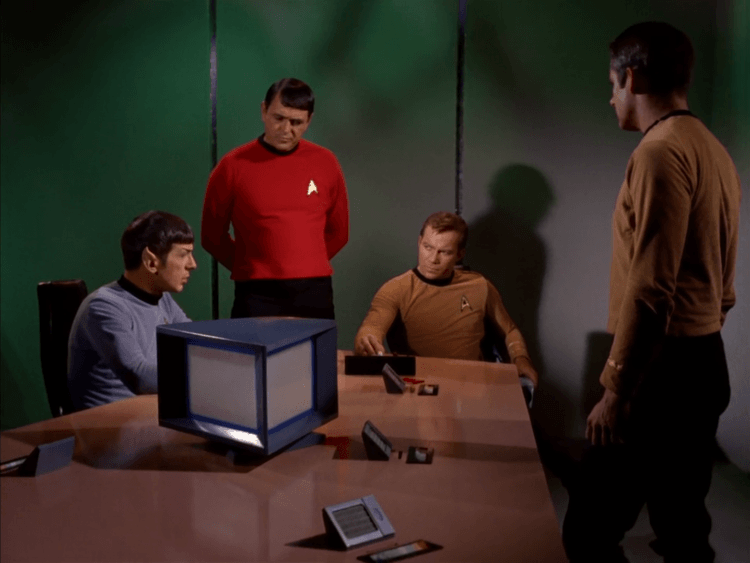 That being said, the story’s time travel elements aren’t all sunshine and kittens. The resolution at the end is complicated in a you’ll-give-yourself-a-headache-trying-to-rathionalize-it sort of way, and I’m not entirely sure it works out logically. Okay, the slingshot briefly throws the Enterprise back through time before propelling them forward. That’s… weird, but I can roll with it. What I have trouble with is that the ship going back in time somehow causes events to proceed as if she was never there in the first place, when if anything there should (briefly, at least) be two Enterprises lurking above North America. That and the fact that Christopher and the staff sergeant just sort of… take their own places? I can deal with convoluted, but that’s all just a bit… convenient. Hand wave-y, even. It feels like we’re trying a little too hard to have our cake (Christopher gets to go home!) and eat it too (No evidence of the Enterprise!). Frankly, I expect better.
That being said, the story’s time travel elements aren’t all sunshine and kittens. The resolution at the end is complicated in a you’ll-give-yourself-a-headache-trying-to-rathionalize-it sort of way, and I’m not entirely sure it works out logically. Okay, the slingshot briefly throws the Enterprise back through time before propelling them forward. That’s… weird, but I can roll with it. What I have trouble with is that the ship going back in time somehow causes events to proceed as if she was never there in the first place, when if anything there should (briefly, at least) be two Enterprises lurking above North America. That and the fact that Christopher and the staff sergeant just sort of… take their own places? I can deal with convoluted, but that’s all just a bit… convenient. Hand wave-y, even. It feels like we’re trying a little too hard to have our cake (Christopher gets to go home!) and eat it too (No evidence of the Enterprise!). Frankly, I expect better.
The episode also provides yet another installment in the ongoing battle between the two Genes (Coon and Roddenberry) about the use of comedy on the show, with Roddenberry favoring a more serious approach and Coon being unafraid to have some fun. Coon certainly won this round, but the results are decidedly mixed. On the one hand, Kirk mouthing off during Fellini’s interrogation is delightful. But on the other hand there’s the computer having been refit with a “personality”, a subplot so lame, unfunny, and utterly pointless that I saw no need to include it in my synopsis. Talk about running the gamut. But thankfully, there’s ultimately more that works than not.
And lastly, in a fun bit of trivia, the script did accurately predict the timing Apollo 11 moon shot, which launched on Wednesday July 16, 1969, some two and a half years after ‘Tomorrow is Yesterday’ aired (and a month and a half ‘Star Trek’ ended its run with ‘Turnabout Intruder‘). Wouldn’t it be nice if we lived in a time when the future was more likely to be predicted by ‘Star Trek’ than ‘The Simpsons’? Hey, I can dream…
Anyway, that’s it for this week. What do you make of ‘Tomorrow is Yesterday’? Let me know in the comments, and be sure to check back in two weeks when we’ll return with another ‘Final Frontier Friday’!
